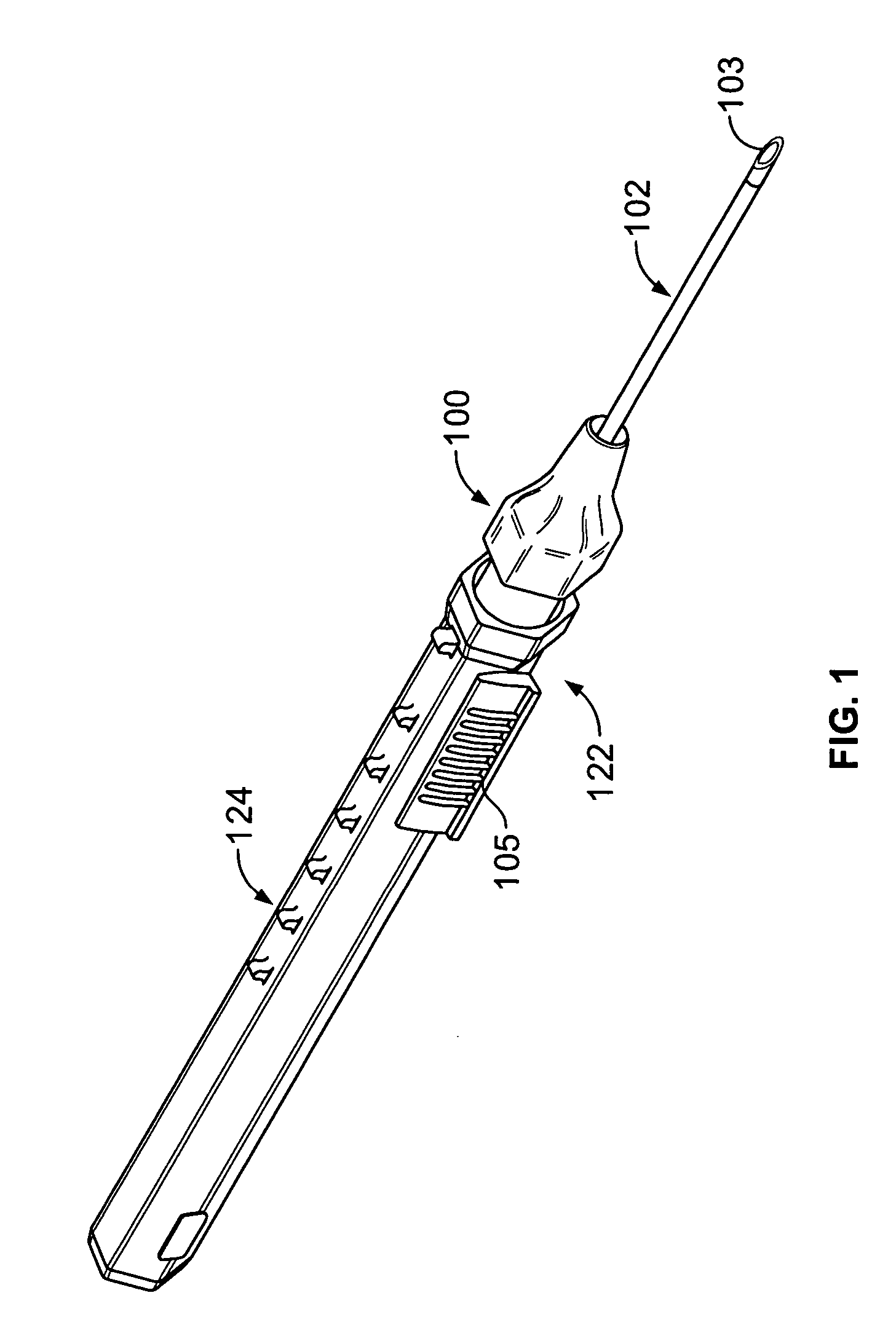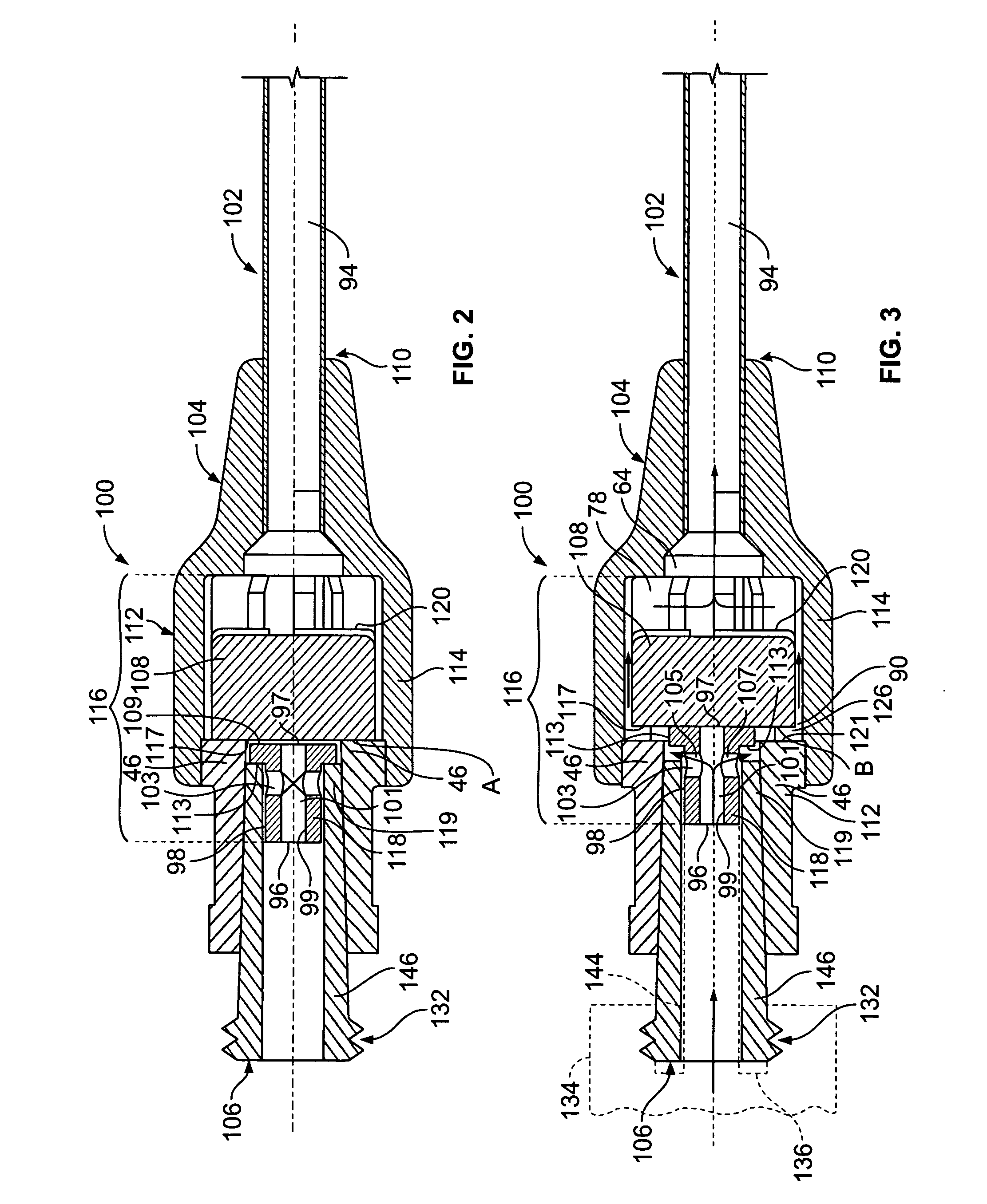Valve for intravenous catheter
a valve and catheter technology, applied in the field of valves, can solve the problems of blood clot being injected into the patient, unfavorable movement of fluid, and disconnection of syringe or device, and achieve the effect of facilitating fluid administration and reducing the risk of blocking the flow path by clotting
- Summary
- Abstract
- Description
- Claims
- Application Information
AI Technical Summary
Benefits of technology
Problems solved by technology
Method used
Image
Examples
Embodiment Construction
[0031] As shown in FIG. 1, the intravenous catheter assembly 122 of the present invention has a needle protector 124, a catheter hub 100, an over-the-needle plastic catheter tubing 102, and a hollow bore needle 103. The needle protector 124 connects to the catheter hub 100 using a mating luer system of threaded interlocking pieces. These threads are typically constructed to conform to American National Standard Institute No. ANSI / HIMA MD70.1-1983 or ISO 594 / 2-1998 relating to luer lock fittings. Other connection systems, however, may be used to connect the needle protector 124 and the catheter hub 100 without departing from the spirit and scope of the present invention.
[0032] One using the intravenous catheter assembly 122 locates a blood vessel on the patient's body. The needle 103 and catheter tubing 102 are inserted through the skin and blood vessel of the patient. Once the needle is in the blood vessel, blood “flashes” through the needle fluid passageway or catheter tubing 102....
PUM
 Login to View More
Login to View More Abstract
Description
Claims
Application Information
 Login to View More
Login to View More - R&D
- Intellectual Property
- Life Sciences
- Materials
- Tech Scout
- Unparalleled Data Quality
- Higher Quality Content
- 60% Fewer Hallucinations
Browse by: Latest US Patents, China's latest patents, Technical Efficacy Thesaurus, Application Domain, Technology Topic, Popular Technical Reports.
© 2025 PatSnap. All rights reserved.Legal|Privacy policy|Modern Slavery Act Transparency Statement|Sitemap|About US| Contact US: help@patsnap.com



